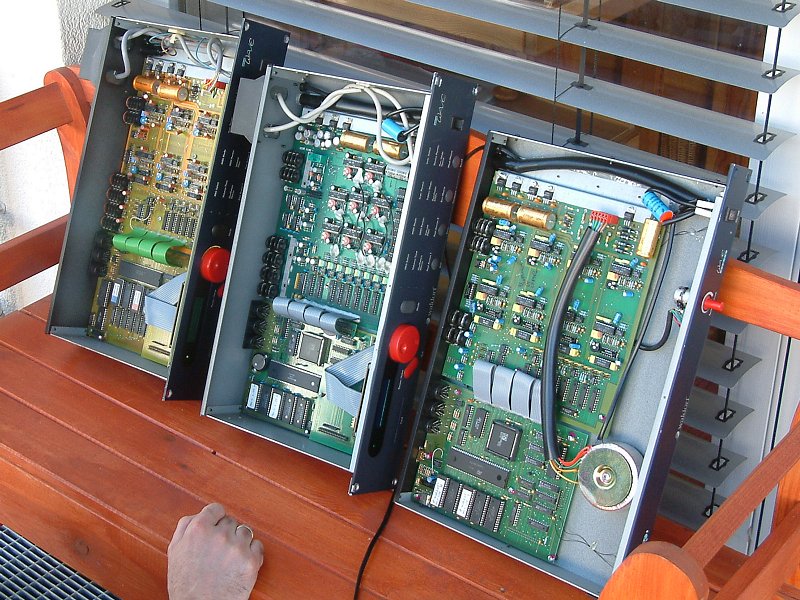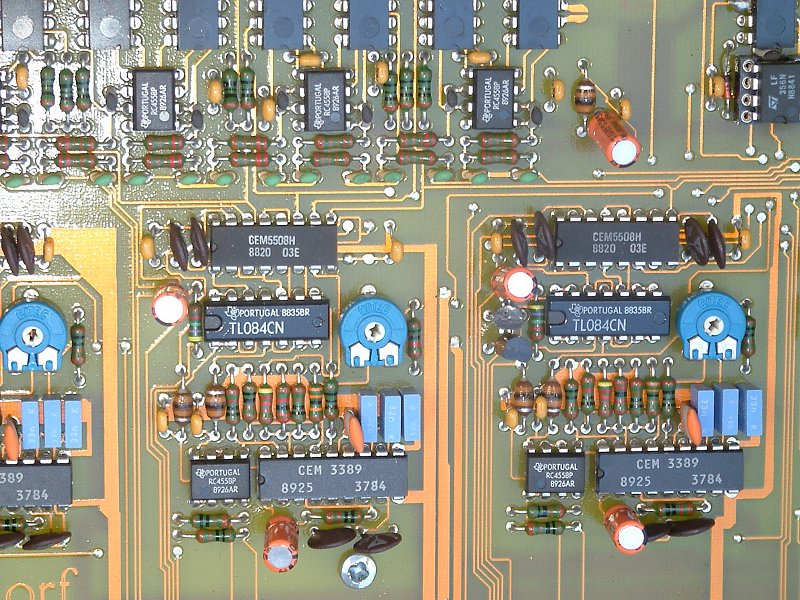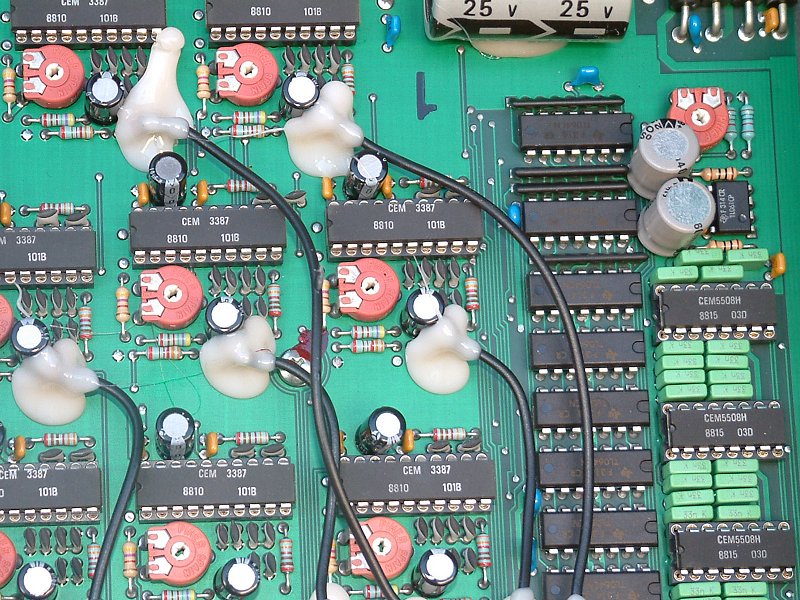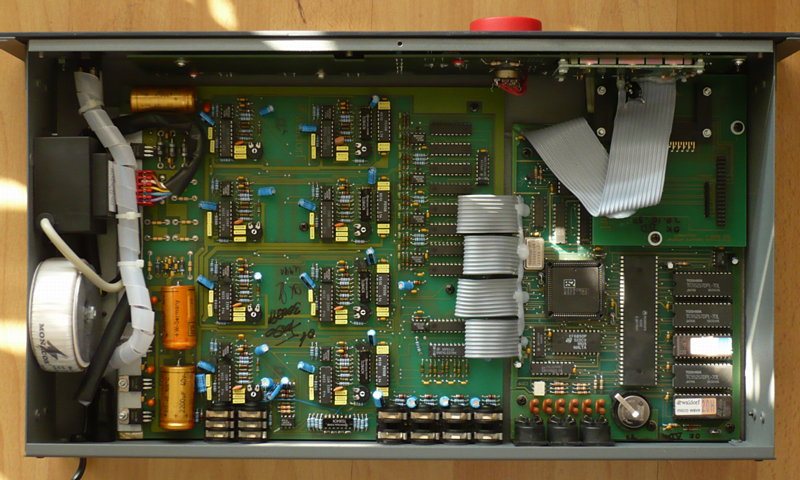The Waldorf-User Frequently Asked Questions
The Inside of a Waldorf microWave
Overview of the Waldorf microWave1

From left to right:
-
microWave in the hardware revision A
- frontpanel dark metalic blue, not painted, anodized metal
- rotary encoder has 52 ticks per revolution, has rippled, metal shaft with slot
-
uses Curtis CEM 3389 (Voltage Controlled Signal Processor)
"Included on-chip are a wide-range four-pole lowpass VCF with voltage controlled resonance, and three high quality VCAs, two of which pan the output signal of the third between two outputs." - LCD has black characters on green background
- case is black
-
microWave in the hardware revision B
- frontpanel is made from Nextel, gray-blue, silkscreening blurry, rubs off
- high quality red dial
- rotary encoder has 24 ticks per revolution, has even, flattened plastic shaft
-
uses Curtis CEM 3387 (low noise VC signal processor)
Was used also on the Waldorf WAVE.
"The CEM 3387 is a general purpose audio signal processor intended for applications requiring high audio quality. Vontained on-chip is a 3-pole low pass voltage controlled filter, cascaded to a 4-pole low pass VC filter with voltage controlled feedback path for Q enhancement (resonance): also included is a final voltage controlled amplifier which drives two additional VCAs for voltage controlled pan into left and right outputs." - LCD has green characters on black background
- case is grey
-
waveSlave (microWave 8 voice expander)
- digital board of the microWave revision B but without the BeeCard adapter
- analog board of the microWave revision A
(Click on the pictures to see them in fill size)
Overview of the two revisions inside

Revision A atop

Revision B atop
Notice the different layout of the analog and digital board PCBs.
And the big jumper cables of the Revision B.
Analog board of the two revisions

Revision A atop

Revision B atop
Notice the different unsed analog filter chips here.
And the big jumper cables of the Revision B.
Digital board of the two revisions

Revision A atop

Revision B atop
Notice the different unsed analog filter chips here.
And the big jumper cables of the Revision B.
Digital board of the two revisions

Revision A atop

Revision B atop
Notice the that our revision B microWave had the OS 1.25 installed.
While the older unit, the revision A unit, had the newer OS 2.0 installed.
Different display types

Revision B atop revision A unit
So, how do they differ in sound?
We A/B tested them using the same sound data.
The revision B envelope always had a little longer release. This might be due to the different OS versions used. This need to be checked again, once we got a revision B microWvae with OS 2.0 next to a revision A unit with the same OS.
But on all sounds the filter of the microWave revision A was more crisp. A bit more opened. If this is due to different filter tuning or the different over all sound of the different filters need to be checked also more in detail.
Traded in for a WaveSlave

Revision B atop
This MicroWave was one of those that you could bought when you traded in your Waldorf WaveSlave for a full MicroWave. Waldorf offer this, because the WaveSlave was not compatible with the MW software version 2.0 that added some nice features. And so Waldorf offer the WaveSlave owners an upgrade. You had to return your WaveSlave and pay a bit of money. And in return you got a full MicroWave.
Notice the following differences:
- No pack-packed PSU. Its build inside the housing
- Revision A analog board with Curtis CEM 3389 filters
- Revision B digital board
- Front panel PCB of the revision A with a 24 clicks/rotation encoder and LCD display
- Housing with the revision A paintjob (Waldorf WAVE like paint)

Backside. Notice the missing PSU back-pack.
all pictures © Boele "SCD" Gerkes & Till "Qwave" Kopper (last 2 pictures only)